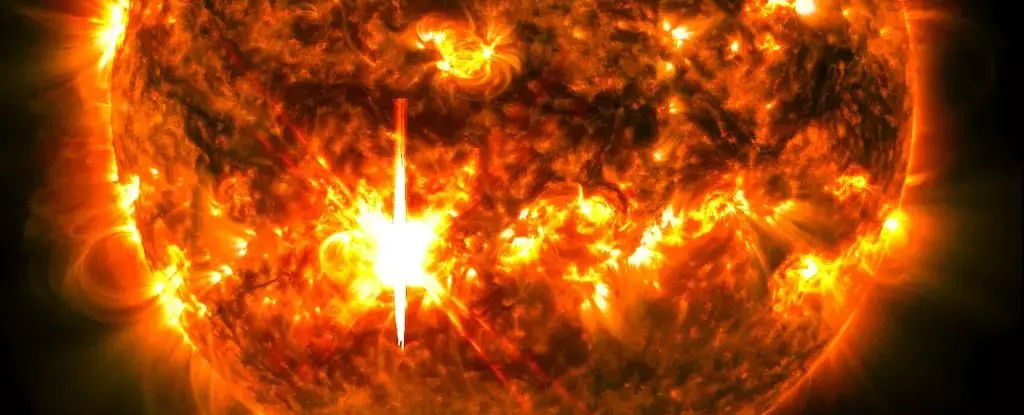As we step into the vibrant and moody season of October, the cosmos has unveiled a spectacular showcase that captures the attention of both scientists and sky enthusiasts alike. On October 1, the Sun unleashed a powerful X7.1 solar flare, marking itself as one of the most potent solar flares recorded during this solar cycle. Positioned within the top echelons of solar activity in the last 30 years, this event serves as a reminder of the dynamic and sometimes tumultuous nature of our nearest star. While there is no immediate threat to life on Earth, the phenomenon has implications for our planet’s magnetosphere, prompting organizations like the NOAA’s Space Weather Prediction Center to forecast geomagnetic storms in the days ahead.
Solar flares and coronal mass ejections (CMEs) are natural occurrences linked to the Sun’s magnetic fields and its activity cycle. These events typically arise from sunspots, which are temporary disturbances in the Sun’s magnetic field. When opposing magnetic forces within these sunspots become entangled, they can suddenly reconnect, resulting in explosive bursts of energy that manifest as solar flares. The X7.1 flare that occurred recently not only emitted an incredible amount of light—traveling to Earth at the speed of light—but also heralded a coronal mass ejection that hurls billions of tons of solar particles into space.
When this energetic plasma reaches Earth, it interacts with our planet’s protective magnetic field, leading to geomagnetic storms. Although these storms mainly affect the upper atmosphere, they can induce electric currents that disrupt satellite operations and affect radio communications. Such celestial events also provide the catalyst for stunning natural displays like the auroras borealis and australis, as charged particles collide with atmospheric atoms, producing the ethereal lights that have captivated cultures for centuries.
The recent solar activity originated from a particularly intricate sunspot group dubbed AR 3842. This Beta-Gamma-Delta region of sunspots represents an area where complex magnetic fields intersect, creating ideal conditions for solar eruptions. AR 3842 has been traversing the solar disk, positioned perfectly for generating Earth-directed eruptions. Shortly after the monumental X7.1 flare, it released an M3.3-class flare, showcasing its continued activity.
While M-class flares are notably less intense than X-class flares, they are still capable of inducing temporary high-frequency radio blackouts, particularly over the sunlit portions of Earth. As these sunspots remain robust and active, they underscore the inherent unpredictability of solar physics, emphasizing the delicate balance that governs solar activity.
As scientists keep a vigilant eye on the developments emanating from AR 3842, expectations rise for geomagnetic events in the days following the solar flare. Agencies like the NOAA, along with international weather services, are anticipating G3-level geomagnetic storms, which signify strong activity in the Earth’s magnetic field. Forecasts for October 4 and 5 predict peak activity that could reach impressive levels on the 10-point Kp Index—a scale discerning geomagnetic activity levels.
With such heightened activity, there is a good chance that viewers across various geographic locations will have the opportunity to witness the dazzling auroras. Looking back to the most intense flare recorded during the current solar cycle—the spectacular X8.7 flare from May—one can only speculate about the potential for otherworldly light displays. While the specifics of the auroras are unpredictable, the excitement surrounding the possibility fuels enthusiasm in the fields of astronomy and space weather.
As we embrace the changing seasons on Earth, we are reminded of our cosmic environment’s enchanting complexity. The recent solar activity not only exemplifies the power housed within our star but also connects us to a broader celestial narrative. The interplay of sunspots, solar flares, and geomagnetic storms reflects the dynamic relationship between the Sun and our planet. While we may remain sheltered from the worst effects, the prospect of witnessing breathtaking auroras hints at a universe that is always in motion, continually offering us a glimpse of its otherworldly grandeur. As we stand under the night sky, we are but spectators to this grand cosmic performance, hoping for many more spectacular shows in the future.

